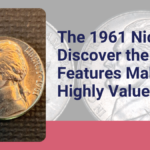The $2 bill, a denomination of U.S. currency, holds a unique place in American numismatics. Less commonly circulated and often seen as a collector’s item, certain $2 bills can be worth significantly more than their face value. The value of a $2 bill is determined by several factors, including its rarity, condition, historical era, and unique features.
Criteria for Valuation
Rarity: The fewer bills in existence, the more valuable they are likely to be.
Condition (Grading): Bills in pristine condition (uncirculated) are typically more valuable. Grading ranges from poor to gem uncirculated.
Historical Significance: Bills from certain historical periods or with specific historical connections may be more valuable.
Special Features: Misprints, unique serial numbers (e.g., low serial numbers, ladder numbers), and star notes (replacement notes) can increase a bill’s value.
Top 12 Most Valuable $2 Bills
1862 Legal Tender Note
Background: The 1862 Legal Tender Note marks the first issuance of the $2 bill, introduced during the Civil War. This was part of an effort by the federal government to finance the war without depleting gold reserves. It represents a significant shift in American currency, as it was among the first paper money that was deemed legal tender for all debts, public and private.
Design Features: These notes featured a portrait of Alexander Hamilton on the left side (later replaced by Thomas Jefferson) and intricate engraving typical of the period. The unique aspect of these notes is their design and the fact that they were hand-signed, adding a personal touch that is absent from modern currency.
Value and Rarity: Given their age and the historical period they represent, 1862 Legal Tender Notes are highly prized. Their value can vary greatly depending on the condition, but even lower-grade notes are considered quite valuable due to their rarity and significance.
1890 Treasury Note
Background: Also known as “Coin Notes,” the 1890 Treasury Notes were issued under the Act of July 14, 1890. They were redeemable in coin and played a critical role in the “Free Silver” movement of the late 19th century.
Design Features: The nickname “Ornate Back” comes from the intricate and detailed design on the reverse side of the note, which is considered one of the most beautiful designs in U.S. currency. The obverse features a portrait of General Winfield Scott.
Value and Rarity: The 1890 Treasury Note’s value is significantly enhanced by its ornate design and the historical context in which it was issued. These notes are rare, especially in higher grades, making them highly sought after by collectors.
1891 Red Seal $2 Silver Certificate
Background: The 1891 Red Seal $2 Silver Certificate is part of a series of silver certificates issued to represent silver bullion deposited in the Treasury. These certificates could be redeemed for their face value in silver.
Design Features: Distinguished by a large red seal on the front, these notes feature a portrait of Windom on the obverse. The red seal and serial numbers contrast sharply with the primarily black and green design of the note, making it visually striking.
Value and Rarity: The combination of the red seal and the historical context of the silver certificate movement contributes to the rarity and value of these notes. Collectors prize them for both their aesthetic appeal and their place in the history of American currency.
1918 Large Size Note
Background: In 1918, the U.S. introduced large-size Federal Reserve Bank Notes as part of its currency. These were issued by individual Federal Reserve Banks, and the $2 denomination is particularly rare.
Design Features: These notes are characterized by their large size, approximately 7.375 x 3.125 inches, making them significantly larger than today’s currency. The design features a portrait of Thomas Jefferson on the obverse and a vignette of Monticello on the reverse.
Value and Rarity: The large size, combined with the unique design and limited circulation, makes these notes quite valuable. They were only issued for a short period, and their distinctiveness from other denominations and series adds to their collectible appeal.
1928 Red Seal $2 Note
Background: The 1928 Red Seal $2 Note marks the transition to the small-size note format that is familiar today. This change was part of a broader effort to standardize the size of U.S. currency and reduce production costs.
Design Features: These notes are characterized by their distinctive red seal and serial numbers, setting them apart from the green seals typical of most U.S. currency. The obverse features a portrait of Thomas Jefferson, while the reverse showcases an image of his estate, Monticello.
Value and Rarity: As the first small-sized $2 bill issued, its historical significance and the red seal contribute to its value. Notes in higher grades or with unique serial numbers are especially sought after by collectors.
1953 Red Seal $2 Note
Background: The 1953 series continued the tradition of the red seal $2 notes. These notes were part of several printings throughout the 1950s and early 1960s.
Design Features: Similar to the 1928 series, these notes feature a portrait of Thomas Jefferson on the obverse and Monticello on the reverse. The red seal and serial numbers are prominent.
Value and Rarity: Collectors often look for notes from this series in uncirculated condition or with specific serial number patterns (e.g., low serial numbers, repeaters). The condition of the note significantly impacts its value.
1963 Red Seal $2 Note
Background: The 1963 $2 notes represent the last series to feature the red seal. This series signifies the end of an era for this distinctive feature in U.S. currency.
Design Features: Maintaining consistency, these notes also display Jefferson’s portrait and Monticello, with the red seal and serial numbers.
Value and Rarity: Their status as the last of the red seal series makes them particularly collectible, with pristine, uncirculated examples fetching higher prices.
1976 $2 Bill
Background: The 1976 $2 bill was issued to celebrate the U.S. Bicentennial. It marked the reintroduction of the $2 bill into general circulation after a hiatus.
Design Features: This series introduced a new reverse design featuring John Trumbull’s depiction of the signing of the Declaration of Independence, while the obverse continued with Jefferson’s portrait.
Value and Rarity: Special serial numbers, such as low numbers, and star notes (replacement notes marked with a star in the serial number) from this series are particularly valuable.
1995 $2 Note
Background: The 1995 $2 notes are notable for their low production numbers compared to other years, making them less common in circulation.
Design Features: The design remains consistent with previous issues, featuring Jefferson and Monticello.
Value and Rarity: The limited print run of this year makes certain serial numbers and condition grades more valuable to collectors.
2003A $2 Note
Background: Issued as part of a series update, the 2003A $2 notes are sought after for their rarity in specific sequences.
Design Features: These notes continued the established design pattern without significant changes.
Value and Rarity: Specific serial number sequences, especially those with star notes, are highly valued for their rarity.
Rare Star Notes
Background: Star notes are replacement notes issued when a defective note is removed from a print run. They are marked with a star before or after the serial number.
Value and Rarity: Star notes, particularly in uncirculated condition or from specific years, can be significantly more valuable than their standard counterparts due to their rarity.
Error Notes
Background: Error notes encompass a variety of printing and production mistakes, including double denominations, inverted backs, and misalignments.
Value and Rarity: The uniqueness of each error and the story it tells contribute to its value. Error notes are particularly prized by collectors who specialize in numismatic curiosities.
These $2 bills, spanning from the early 20th century to the present, highlight the rich history and evolving design of U.S. currency. Collectors value these notes not only for their monetary worth but for their historical significance, design features, and the stories they represent in the broader narrative of American numismatics.
Whether seeking rare serial numbers, error notes, or historically significant issues, collectors find in these $2 bills a fascinating window into the nation’s past and a vibrant hobby that connects them with collectors and history enthusiasts alike.



